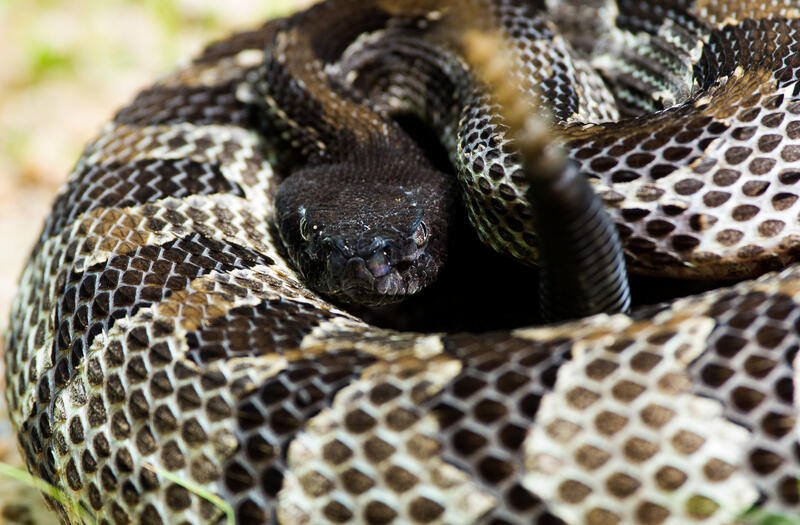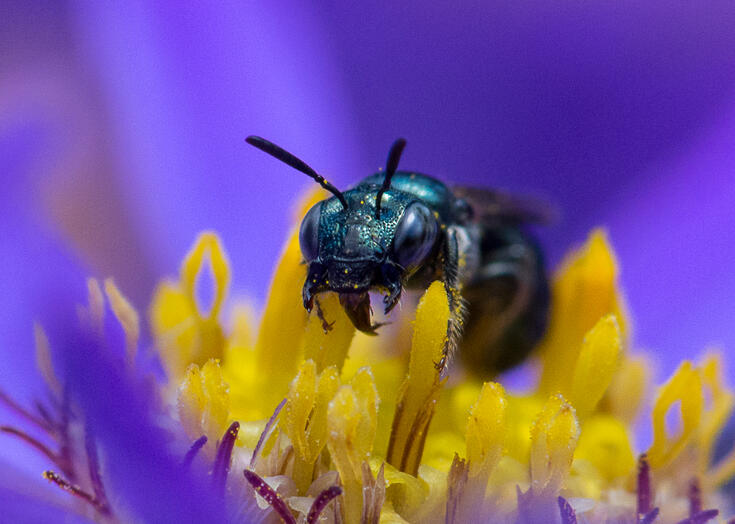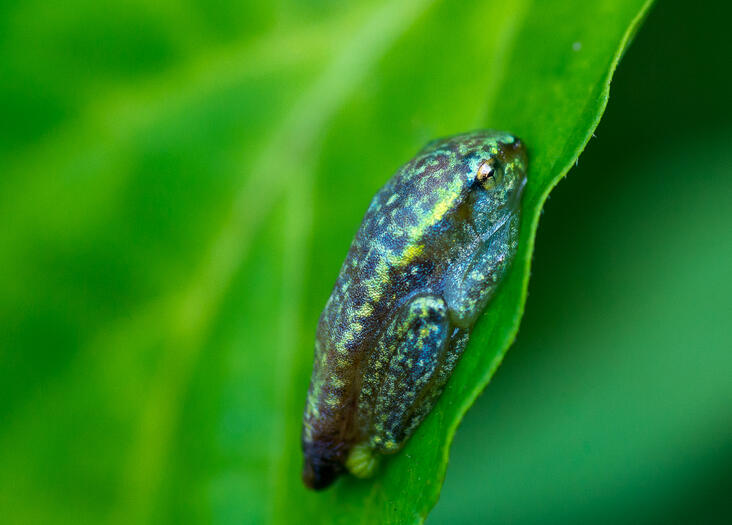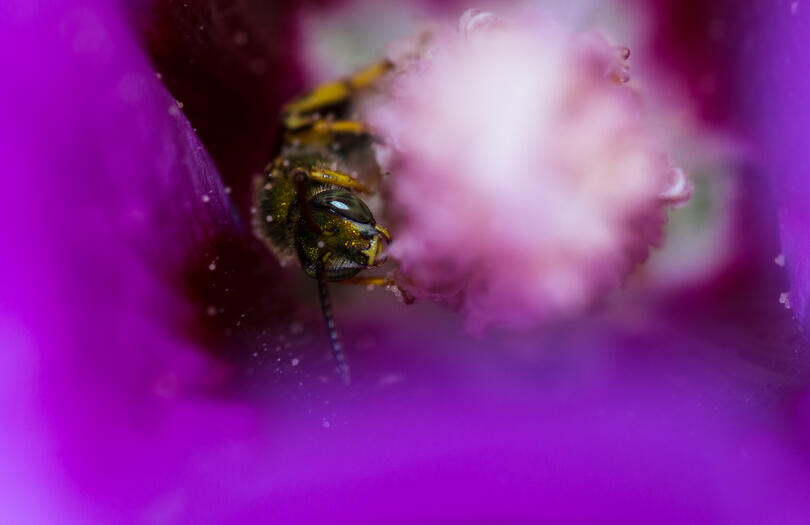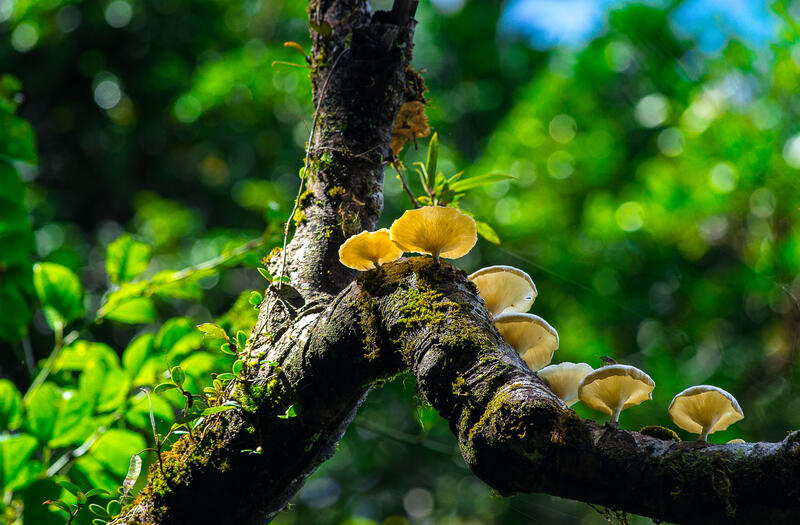Asia Murphy, Ph.D.
ecologist. writer. photographer.
The Science
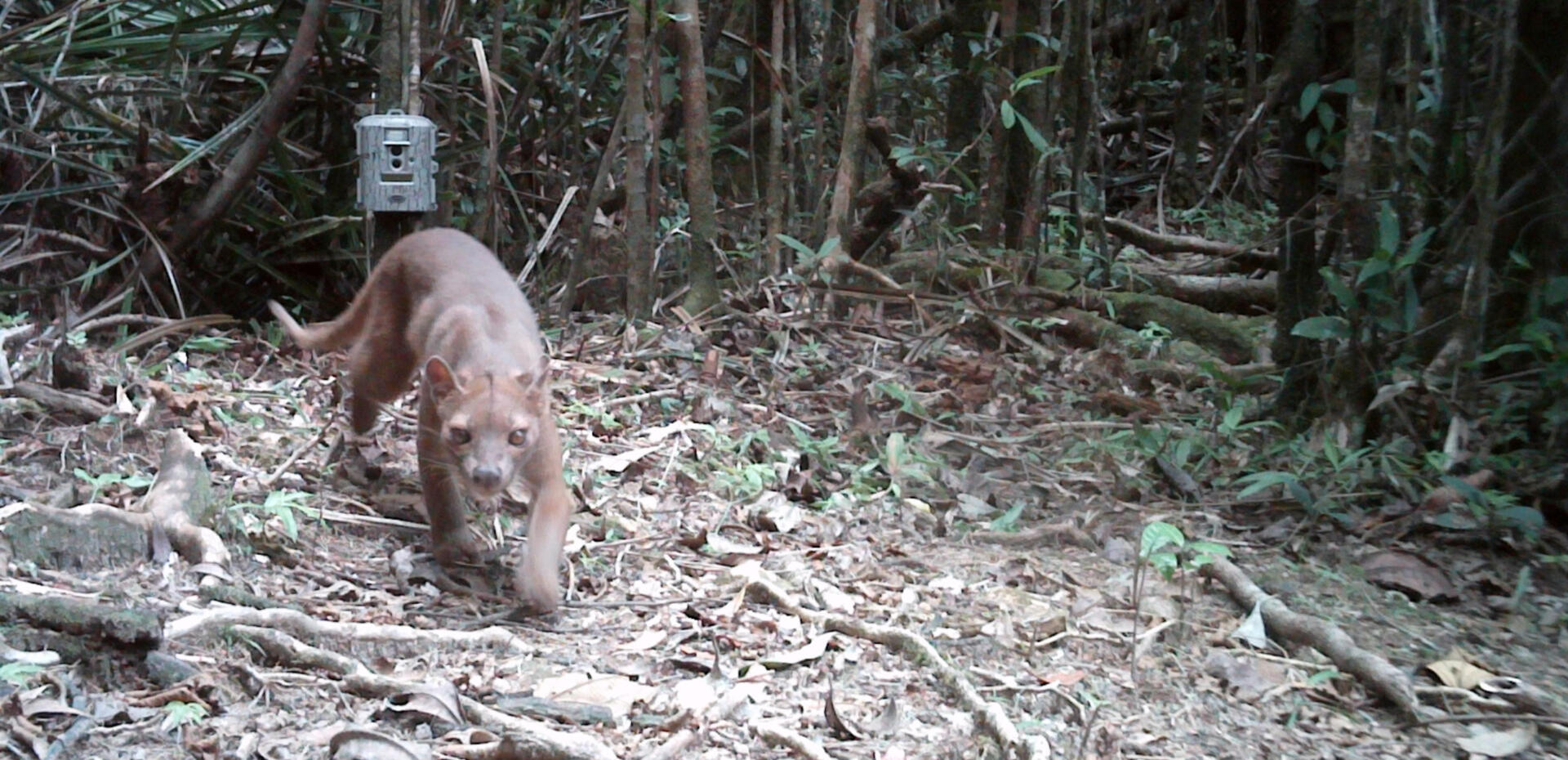
I use cameras to spy on wildlife. My research is focused on answering questions like:
Where are species present and why?
How many individuals are there in a population?
What strategies do species use to coexist together?
I firmly believe in building research capacity in other countries and hope to use camera traps and other noninvasive tools to further our knowledge of and ability to conserve threatened species across the world.
The Fiction
When a dying witch-hunter and a literally damned witch meet up in the middle of a massacre, they must overcome religious conviction, a vengeance-seeking gang leader, an eldritch rainforest, and a thrice-killed priest to awaken a feral fire god and save the land from an alien bioweapon.THE BLOOD-DIMMED SKY is the adult science fantasy novel for readers who want a FIFTH SEASON-style apocalypse featuring ANNIHILATION-flavored fire ecology and JADE CITY grit.
The Pictures
While I'm out doing field work I get a lot of chances to take pictures. Check out my etsy shop for prints, calendars, and more!
Projects
What Factors Influence If & How Carnivores Partition Space, Time, & Food?

In 1974, Schoener reviewed 84 studies and found that species tended to coexist by using different spaces, being active at different times, and eating different foods. Since then, hundreds of resource partitioning studies have been published, but no one has reviewed them to see if Schoener's findings still hold up.Using published studies focused on interactions between carnivores, I'm examining whether carnivores do in fact partition time more than space and food, how we tend to study carnivore resource partitioning, and which species and regions are understudied in this context.
How Do Humans & Apex Predators Influence Coyote Interactions with Other Predators?
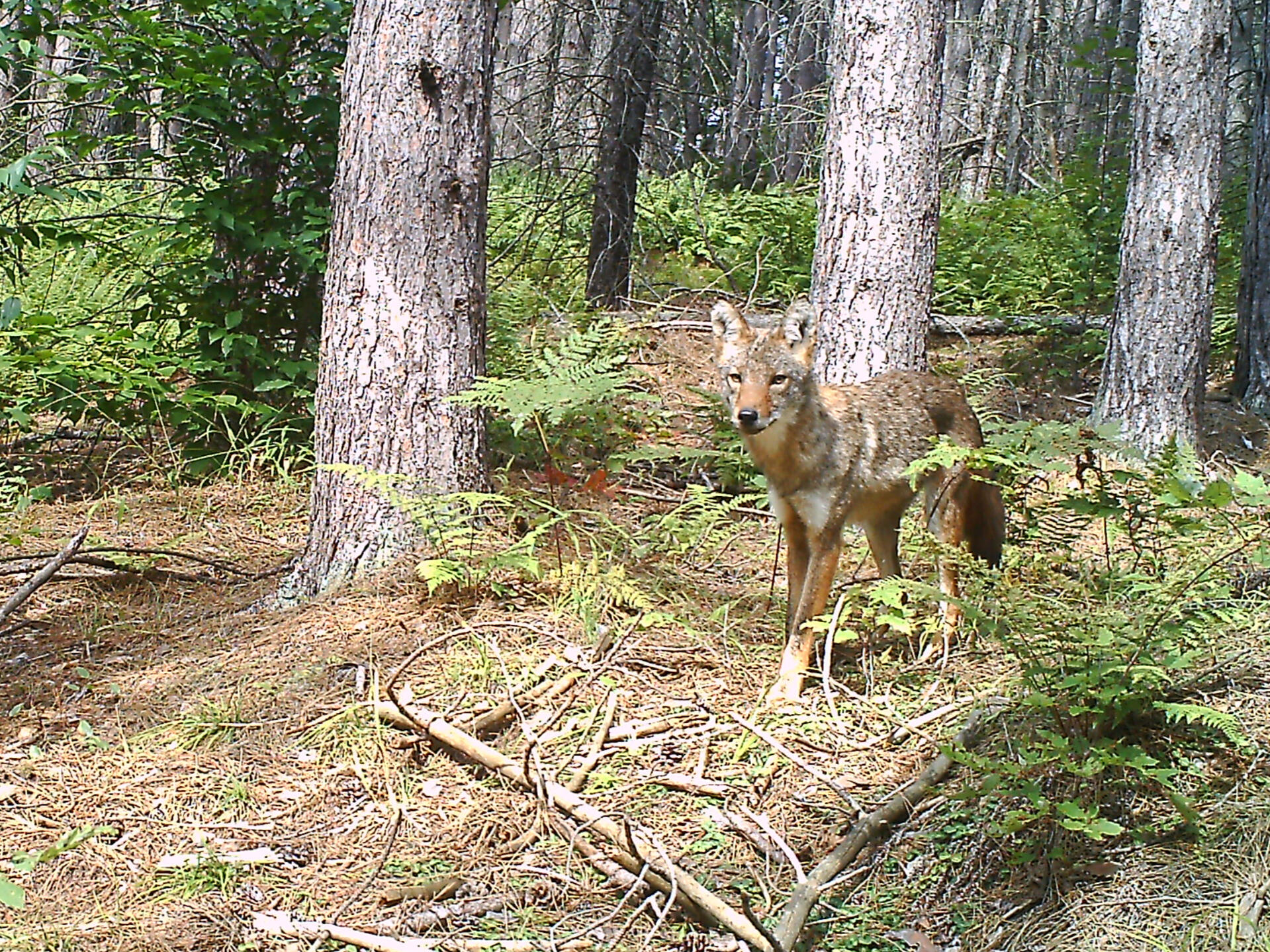
Because of human persecution and changes in habitat, it is thought that the mesopredator--the human-tolerant, generalist coyotes and bobcats--are on the rise, with the sun setting on the era of the apex predator. However, whether mesopredators are actually gaining in influence is still in debate.Using over fifty camera surveys from across North America and with coyotes as a "model" mesopredator, I investigated how apex predators and human-caused habitat disturbance influenced how coyotes and smaller predators, like bobcats and opossums, share space and time.We found that an apex predator being around makes it easier for the smaller mesopredators to avoid sharing spacetime with coyotes, while humans made it harder.
How Do Carnivore Interactions & Distribution Influence Fawn Distribution & Survival?
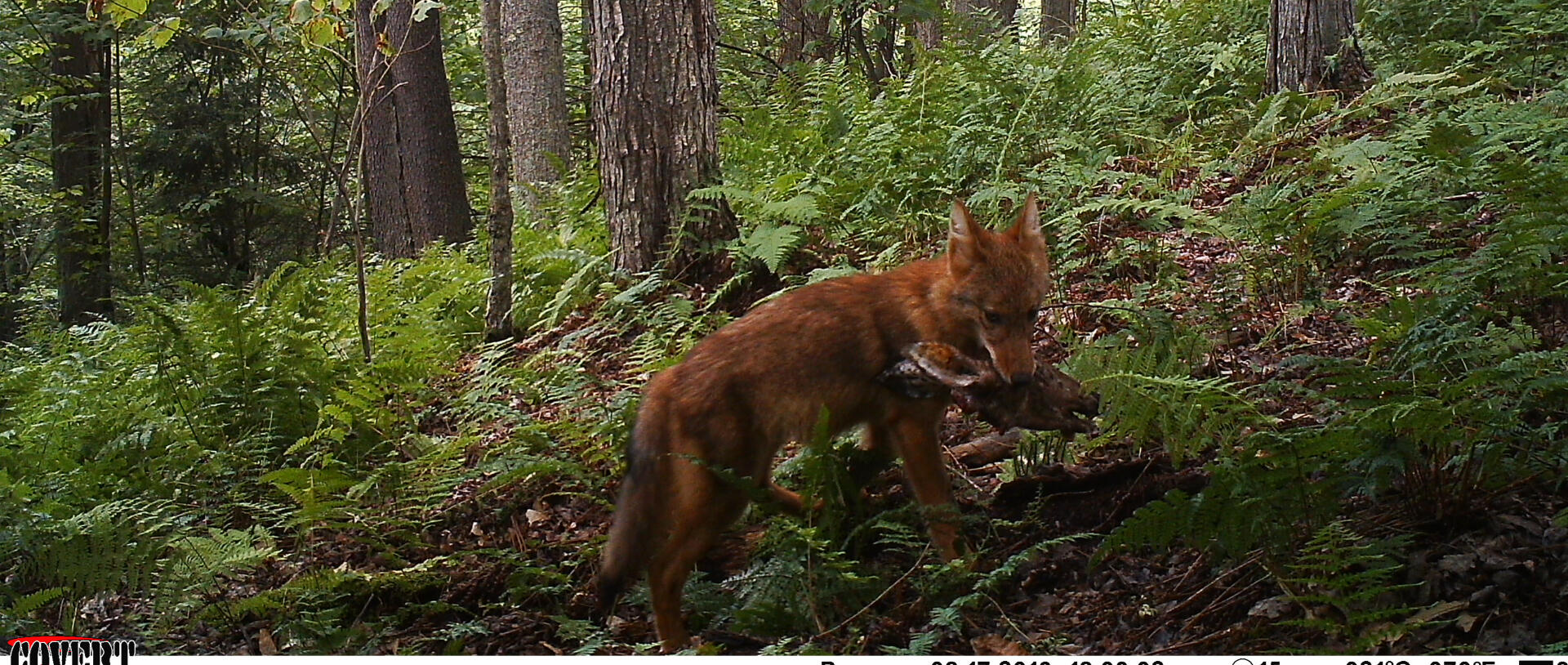
For baby deer, the forest is a landscape varying in safety, changing depending on the habitat, time of day, and the predator that they are avoiding. Throw in more than one predator and you have a very complicated chessboard to navigate!Using three years of camera trap data at three state forests in PA, we discovered that human disturbance and use of state forests made it harder for fawns to avoid sharing space and time with black bears, coyotes, and bobcats. Check out my dissertation and #whoseatingbambi!
How many fosa are there in Madagascar's largest protected area?
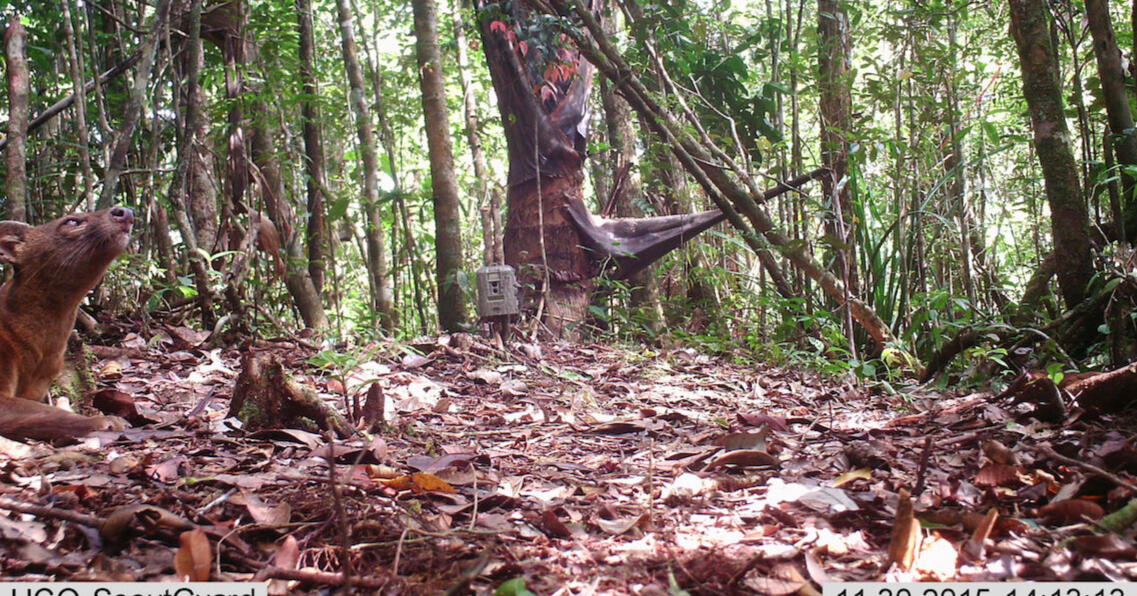
Madagascar's unique carnivore family (Eupleridae) is severely understudied. For many species, population estimates are lacking, which makes it very difficult to correctly determine how threatened they are.Using data from fifteen surveys across seven sites, we found that there is likely about 1,000 adult fosa in the protected area (as little as 600 and as many as 1,800). This means that the Masoala-Makira protected area is home to a significant number of the fosa left in the world.
Can we use extra camera trap data to provide new information for little-studied species?
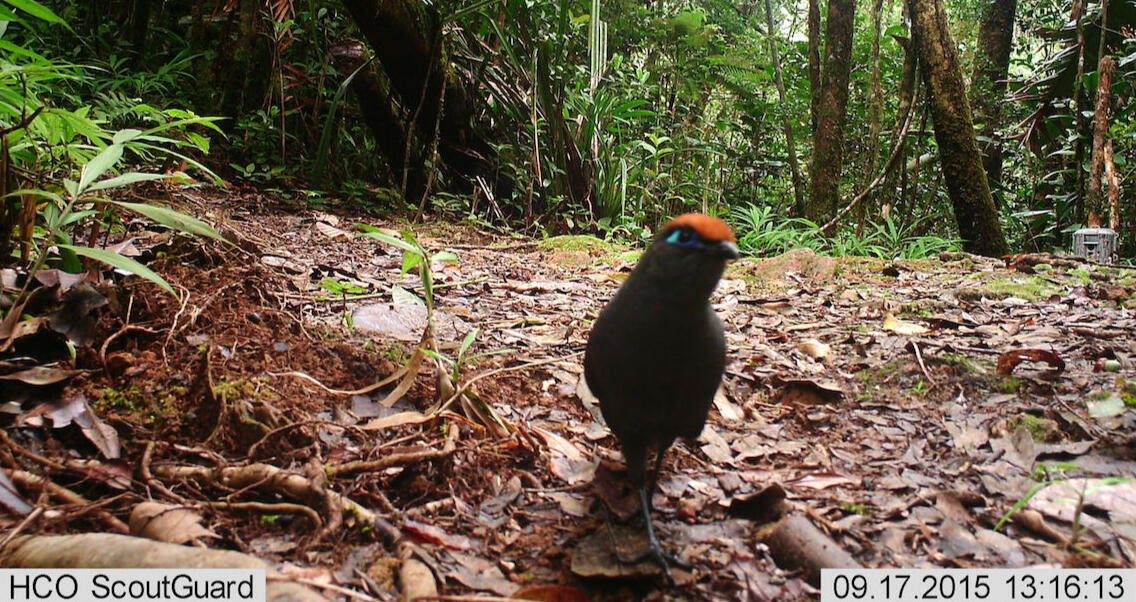
Camera traps are awesome because they take pictures of EVERYTHING that walks in front of the camera. We got thousands and thousands of pictures of birds, small mammals, and a (mainly) Madagascar-exclusive insectivore group called tenrecs.Using this data we found that we were less likely to detect many of the bird species if we saw a lot of feral cats in the area, and that red forest rats (adorably rusty-colored pudgy rodents) were detected more often further from the forest edge.
Are lemur densities different between undisturbed and disturbed forests?
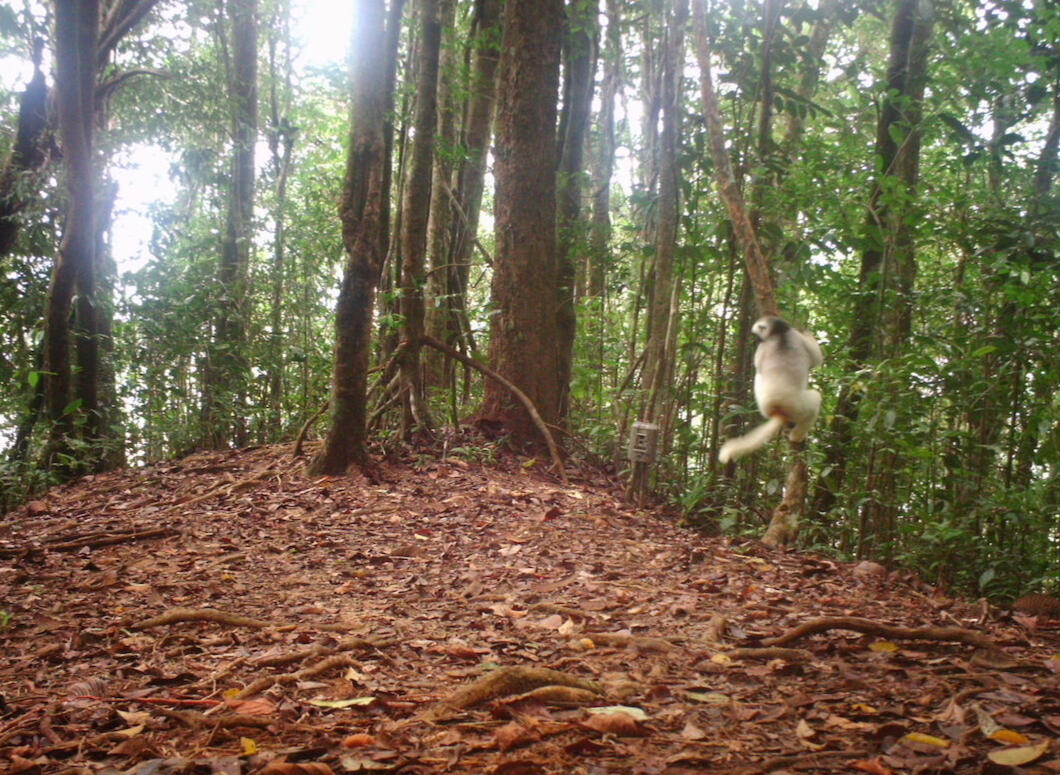
In addition to running fifteen camera trap surveys in Masoala-Makira, we ran lemur surveys on forest paths that we walked night and day. All told, we got over a thousand observations of lemurs, including critically endangered species like silky sifaka and indri, while walking over 1,000 kilometers!We provided the very first statistically-rigorous population estimates of three species for the region, and found that you were less likely to observe lemurs in very disturbed forests compared to undisturbed forests.
publications
2025
Devarajan, K. et al. 2025. When the wild things are: defining mammalian diel activity and plasticity. Science Advances:10.1126/sciadv.ado3843 (pdf).Murphy, A. et al. in review. Anthropogenic impacts on North American mesopredator interactions exceed those of apex predators. Ecological Applications.Murphy, A and Wilmers, C. C. in prep. Patterns in global carnivore resource partitioning. Journal of Animal Ecology.Waller, M. et al. in prep. Data and scale mismatch in urban habitat mapping methods. Landscape and Urban Planning.
2023
Garg, K. and Murphy, A. 2023. Arboreal lemur terrestriality is influenced by when and where predators are present. International Journal of Primatology:10.1007/s10764-023-00394-3 (pdf).Harris, N.C., Murphy, A.J., Green, A.R., Gámez, S., Mwamidi, D., and Nunez-Mir, G.C. 2023. Socio-ecological gap analysis to forecast species range contractions for conservation. PNAS: e2201942119 (pdf).Murphy, A. 2023. "Wildlife Surveys Out of Thin Air". American Scientist, pp. 153-155 (pdf).
2022
Green, A.R., Murphy, A., Collison, B.R., Sánchez-Nivicela, M., Anderson, H., Morano, J.L., Williams, T.D., and Wilkinson, C.E. 2022. A response to Cafaro, Hansson, and Götmark (2022): Shifting the narrative from overpopulation to overconsumption. Biological Conservation 273:109698 (pdf).Rivera, K., Fidino, M., Farris, Z.J., Magle, S.B., Murphy, A., and Gerber, B.D. 2022. Rethinking habitat occupancy modeling and the role of diel activity in an anthropogenic world. The American Naturalist: 10.1086/720714 (pdf).Wampole, E.M., Gerber, B.D., Farris, Z.J., Razafimahaimodison, J.C., Andrianarisoa, M.H., Ralazampirenena, C.J., Wright, P.C., Johnson, S.E., Valenta, K., Ross, P., Murphy, A., Karpanty, S.M., Kelly, M.J., Anderson, C., Razafy, P., Rafaliarison, R., Rasambainarivo, F., Merson, S.D., and Larney, E. 2022. Madagascar terrestrial camera survey database 2021: A collation of protected forest camera surveys from 2007-2021. Ecology doi:10.1002/ecy.3687.Murphy, A. 2022. "A Landscape of Fear of Humans". American Scientist, pp. 282-287 (pdf).
2021
Murphy, A., Diefenbach, D., Ternent, M., Lovallo, M., Miller, D. 2021. Threading the needle: how humans influence predator-prey spatiotemporal interactions in a multiple-predator system. Journal of Animal Ecology (pdf).Murphy, A. 2021. Examining how spatial-temporal interactions between multiple predators influence the distribution, vigilance, and survival of white-tailed deer (Odocoileus virginianus) fawns. Dissertation. University Park, PA (pdf).Hinde, K. et al. 2021. March Mammal Madness and the power of narrative in science outreach. eLife 10:e65066 (pdf).
2020
Farris, Z.J., Gerber, B.D., Karpanty, S., Murphy, A., Wampole, E., Ratelolahy, F., and Kelly, M. 2020. Exploring and interpreting spatiotemporal interactions between native and invasive carnivores across a gradient of rainforest degradation. Biological Invasions 22:2033-2047 (pdf).
2019
Morelli, T. L., et al. 2019. The fate of Madagascar's rainforest habitat. Nature Climate Change 10:89-96 (pdf).Mpemba, H., Fan, Y., Murphy, A., Heng, B., and Jiang, G. 2019. First camera trap based evidence of grey wolf Canis lupus in the Hanma National Nature Reserve, Inner Mongolia, China. Pakistan Journal of Zoology, 50:0 (pdf).Davis, C.L., et al. 2019. Ecological correlates of the spatial co-occurrence of sympatric mammalian carnivores worldwide. Ecology Letters 21:1401-1412 (pdf).
2018
Murphy, A., Kelly, M.J., Karpanty, S.M., Andrianjakarivelo, V., and Farris, Z.J. 2018. Using camera traps to investigate spatial co-occurrence between exotic predators and native prey species: a case study from northeastern Madagascar. Journal of Zoology doi:10.1111/jzo.12645 (pdf).Murphy, A., Gerber, B.G., Kelly, M.J., Karpanty, S.M., Ratelolahy, F., and Farris, Z.J. 2018. Making the most of sparse data to estimate the density of rare and threatened species: a case study with a little- studied Malagasy carnivore (fosa, Cryptoprocta ferox). Animal Conservation doi: 10.1111/acv.12420 (pdf).
2017
Murphy, A., Ferguson, B., and Gardner, C.J. 2017. Recent estimates of ring-tailed lemur (Lemur catta) population declines are methodologically flawed and misleading. International Journal of Primatology 38:623-628 (pdf).Murphy, A., Farris, Z.J., Karpanty, S., Kelly, M.J., Miles, K.A., Ratelolahy, F., Rahariniaina, R.P., and Golden, C.D. 2017. Using camera traps to examine landscape and dynamic occupancy trends of ground-dwelling birds in the rainforest of northeastern Madagascar. Bird Conservation International 1-14. doi:10.1017/S0959270917000107 (pdf).Murphy, A., Goodman, S.M., Farris, Z.J., Karpanty, S.M., Andrianjakarivelo, V., and Kelly, M.J. 2017. Landscape trends in small mammal occupancy in the Makira-Masoala protected areas, northeastern Madagascar. Journal of Mammalogy 98:272-282 (pdf).Farris, Z.J., Kelly, M.J., Karpanty, S., Murphy, A., Ratelolahy, F., Andrianjakarivelo, V., and Holmes, C. 2017. The times they are a changin’: Multi-year surveys reveal exotics replace native carnivores at a Madagascar rainforest site. Biological Conservation 206:320-328 (pdf).
2016
Murphy, A., Farris, Z.J., Karpanty, S., Ratelolahy, F., and Kelly, M.J. 2016. Estimating encounter rates and density of three lemur species in northeastern Madagascar. International Journal of Primatology 37:371-389 (pdf).Januchowski-Hartley, S.R., Hilborn, A., Crocker, K.C., and Murphy, A. 2016. Scientists stand with Standing Rock. Science 353:1506 (pdf).
2015
Farris, Z.J., Boone, H.M., Karpanty, S., Murphy, A., Ratelolahy, F., Andrianjakarivelo, V., and Kelly, M.J. 2015. Feral cats and the fitoaty: first population assessment of the black forest cat in Madagascar’s rainforests. Journal of Mammalogy 97:518-525 (pdf).Farris, Z.J., Gerber, B.D., Karpanty, S., Murphy, A., Andrianjakarivelo, V., Ratelolahy, F. and Kelly, M.J. 2015. When carnivores roam: temporal patterns and overlap among Madagascar’s native and exotic carnivores. Journal of Zoology 296:45-57 (pdf).Farris, Z.J., Golden, C.D., Karpanty, S., Murphy, A., Stauffer, D., Ratelolahy, F., Andrianjakarivelo, V., Holmes, C.M., and Kelly, M.J. 2015. Hunting, exotic carnivores, and habitat loss: anthropogenic effects on a native carnivore community, Madagascar. PLoS ONE 10:e0136456 (pdf).
Teaching About colonialism and Conservation
WFS 497 Spring 2021: Global Conservation and Natural Resources Management
Why Teach This?
I taught this course to speak truth to power. In my twelve or so years in this field, I’ve seen way too many white people blame locals in the Global South over wildlife population declines when they refuse to acknowledge that it’s overexploitation by their colonialist ancestors that put the populations into such a state where each remaining individual is precious. With the original twitter thread and this course, I tried to shine light on the dirt American and European conservationists of old did, so that when these twelve to fifteen undergraduates go out into the world and read about tiger poachers, they perhaps remember that during the colonization of India over thirteen thousand tigers—that’s 3x the current global population today—were killed, largely by Europeans.I banked on human senses of empathy and justice and assumed that exposure was needed—you’d be surprised how often we learn that Yellowstone National Park was the first national park in the world (it wasn’t) without being taught about the antagonism of the US Army and the flight of the Nez Perce—so the instructional techniques I relied on were lectures and readings. I used documentaries that were freely available on YouTube, such as Human Zoos, as a way to switch things up. Students were often prompted to discuss how they felt about the information they learned, and how it had or had not changed their world view.Student learning—or realization—was assessed in a variety of ways. I used a presentation assignment on a species and its abundance to see if students are able to see how human conflict, colonization, and wildlife ecology intertwine. Every module assignment asked for students to reflect on what they were learning. I used near-future issues, such as green militarization and climate, to see if students were able to assess in which ways the future might be informed by the past.I hoped that I provided a few people with the knowledge and context to analyze conservation situations and whether they are unjust. If some of these students go onto become researchers or managers or conservationists, I hope that they remember history when attempting to find solutions for the present and the future.
THE BLOOD-DIMMED SKY
ISOU's already lost so much. His sanity. His soul. His loves. But can he stand to lose the family he just got back, even if it means destroying the demon that took everything from him?The demon that even now wakes in his blood?
Nothing will stop NAJ from killing a god. Not waking up in a stranger's body. Not the witch-hunter, the gang leader looking for revenge, or the murderous priest. Not a plague. Not a dead world.Being unable to find said god? Ok. That might.
SHI VEISYA is a shapeshifter. A doll, you see, is empty of and shaped by desire. He's been Nothing. A Plaything. Devotee. Expert. For his new vessel, he'll be Solace.After all, he needs a shape, ideally a pleasing one. And what is growing within him is anything but.
ASIA MURPHY likes to write about the fictional equivalents of regime shifts, the intersection of science and magic, and terrible characters with cutting edges which, ground together, might become something less injurious. She is represented by Ernie Chiara at Fuse Literary.THE BLOOD-DIMMED SKY is her first novel-length manuscript.

